Pieris rapae
PYE-er-ismm
RAY-pee
(Linnaeus, 1758)
Pieris rapae female, courtesy of Markku Savela.
Superfamily: Papilionoidea | Website designed and maintained |
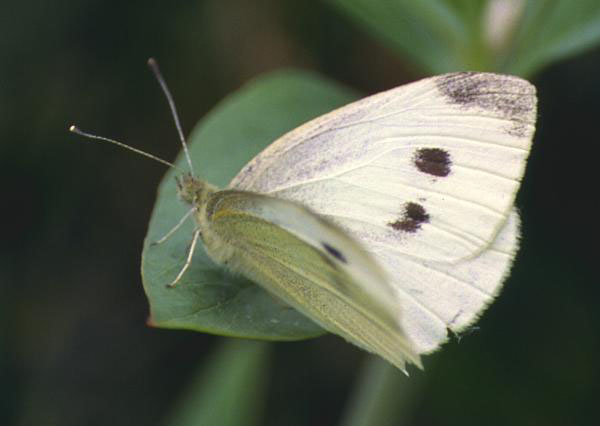
Pieris rapae female, courtesy of Markku Savela.
Superfamily: Papilionoidea | Website designed and maintained |
It is quite common on Prince Edward Island in eastern Canada.
This butterfly was introduced to North America from Europe around 1860 and is considered a garden pest in most locales.
Description:The dorsal surfaces of all wings are white with black wingtips on the forewings. There are two submarginal black spots on the female, but only one in the male.The ventral surface of the hindwings and the forewing tip are a yellow-green or gray-green. In the spring and fall, when days are shorter, the adult butterfly is smaller, has less yellow, and the black areas are reduced. Photo courtesy of Emil Pignetti. |
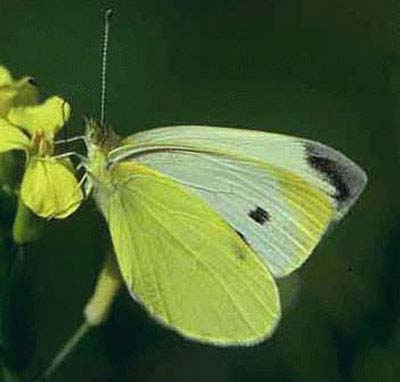 |
It is usually one of the first butterflies to emerge in spring from overwintering pupae. I usually begin to see them on Prince Edward Island in late May.
Adults nectar from a variety of plants including, but not limited to, mustards, dandelion, red clover, asters, and mints.
Eggs, Larvae, Pupae:Males patrol to locate receptive females who deposit eggs singly on undersides of host foliage of plants in the mustard (Brassicaceae) family and occasionally some in the caper family (Capparidaceae).Mated pairs flit about the garden, warning of a larval onslaught. Each female is capable of laying approximately 200 eggs. Photo courtesy of Emil Pignetti. |
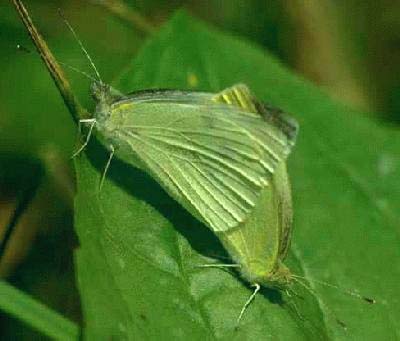
|
Although eggs are laid singly on the
underside of host
food plants, the same female or several females often lay numberous, white,
rocket-shaped eggs
on a single plant. |
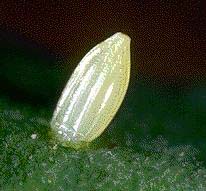 |
Cauliflower leaves, which are so important for blanching the cauliflower, could be stripped by a dozen plump green, fourth-fifth instar larvae almost overnight. The larvae also do considerable damage to cabbage heads.
Photo below courtesy of J. L. Capinera, University of Florida.
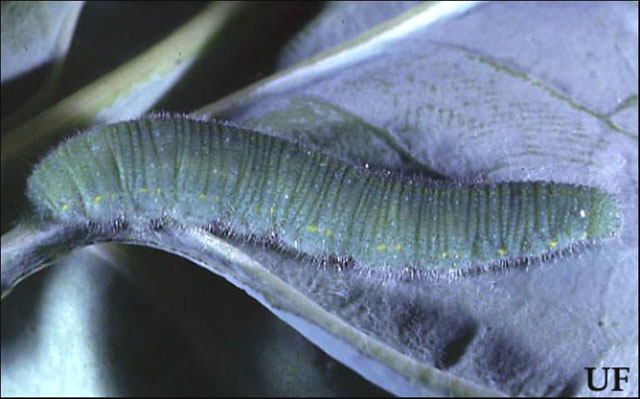
For those of you who like to garden, the young larvae, frequently hiding under the brocolli flowerheads, quickly bubble to the surface when the heads are blanched. "Frequently" does not mean always. Yuck!
Fortunately for gardeners, the larvae are easily controlled with an organic insecticide, Bacillus thuringensis, often called BT or thuricide.Those larvae which survive insecticides and predators hang on the underside of horizontal surfaces or attach themselves to vertical stems or stakes to pupate. Photo courtesy of Univ. California Statewide IPM Project |
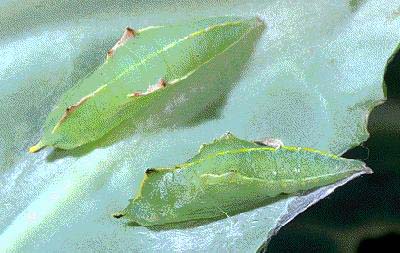 |
Use your browser "Back" button to return to the previous page.
Visit other websites maintained by Bill Oehlke:
I offer two membership sites that far exceed the coverage offered on the sites listed above: